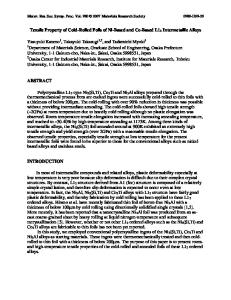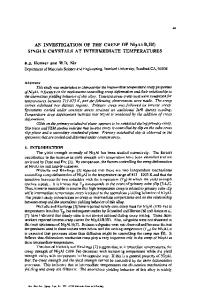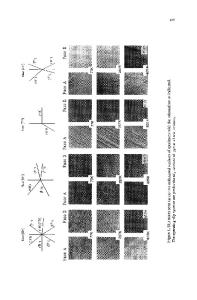Plastic Flow Instabilities of L1 2 Ni 3 (Si,Ti) Alloys at Intermediate Temperature
- PDF / 360,541 Bytes
- 7 Pages / 612 x 792 pts (letter) Page_size
- 56 Downloads / 357 Views
The serrated plastic flow of L12 Ni3(Si,Ti) alloys at intermediate temperature was investigated by tensile tests in terms of the effects of temperature, strain rate, composition, and microstructure. Serrated plastic flow was most strongly observed at 473 K and at a strain rate of 1.6 × 10−4 s−1. Correspondingly, the maximum stress amplitude and the lowest (negative) strain-rate sensitivity were observed at 473 K. Serrated plastic flow took place irrespective of boron doping and was more significant in a fine-grained Ni3(Si,Ti) alloy. The static aging at 473 K resulted in reduced flow stress. The activation energy for serrated plastic flow was estimated to be about 57 kJ mol−1, suggestive of being smaller than that for lattice diffusion of solutes. The serrated plastic flow behavior of Ni3(Si,Ti) alloys was compared with that of L12 Co3Ti alloys, and is qualitatively explained on the basis of the dynamics of solutes in the core of a dissociated screw dislocation. I. INTRODUCTION
It is well known that L12-type Ni3Al, Ni3Si, Ni3Ga, Ni3Ge, Co3Ti, and their alloys exhibit a positive temperature dependence of the yield strength at intermediate temperature (mostly above room temperature), known as the yield strength anomaly.1–5 This strength anomaly has been characterized by some facts: (i) violation of Schmid’s law; (ii) tension/compression asymmetry; (iii) large work hardening rate; (iv) very low strain-rate sensitivity (for a recent review, see Ref. 1). As the origin of the strength anomaly, the Kear–Wilsdorf (KW) mechanism6 has been widely accepted. Under thermal activation, mobile screw superpartial dislocations, 1/2[1¯01](111),7 cross-slip with the help of anisotropy in the antiphase boundary energy between the (111) and (010) planes,8 and there is also the effect of anisotropic elastic interaction between two superpartial dislocations,9 forming sessile KW locks. The KW locks result in increased strength. Strength anomalies in ordered intermetallics have also been observed in various kinds of crystal structures, alloys, and alloy compositions.5 Some of the observed strength anomalies have been attributed to the effect of dynamic strain aging (DSA) or the so-called Portevin–Le Chatelier effect,10 by which the abnormal strength increase and strain-rate sensitivity and also the serrated plastic flow observed in conventional metallic alloys have been explained.11–15 As the origin of DSA, it has been suggested that solutes dynamically interact with moving dislocations and have their strongest interaction at intermediate temperature and strain rate, resulting in the strength increase and the serrated flow curve behavior. L12 Co3Ti alloys that display the strength J. Mater. Res., Vol. 17, No. 3, Mar 2002
http://journals.cambridge.org
Downloaded: 06 Apr 2015
anomaly have been recently reported to show serrated plastic flow at intermediate temperature.16 The observed plastic flow instability has been suggested to be understood as DSA in which solutes in the core of dissociated screw dislocation (i.e., in inelastic field
Data Loading...











